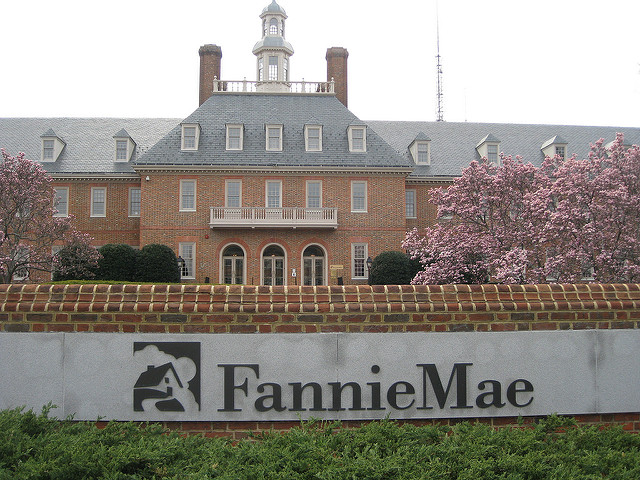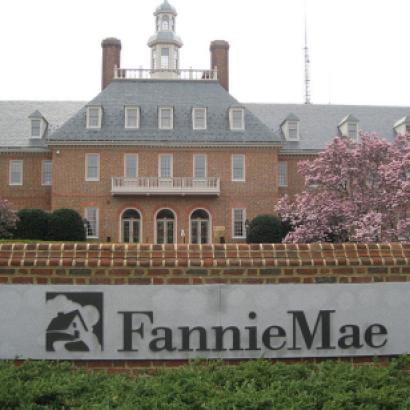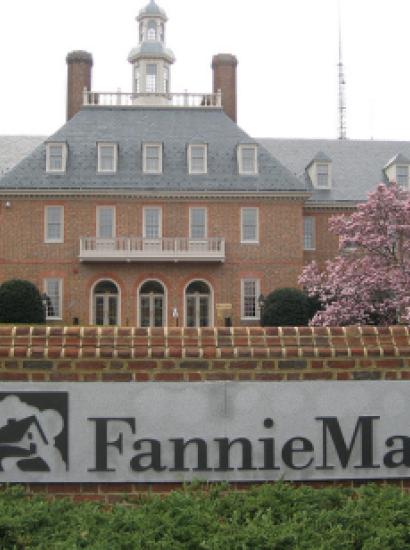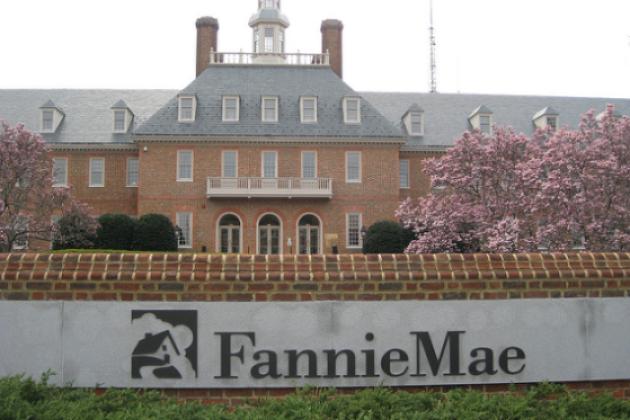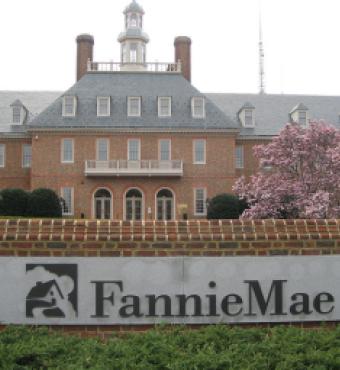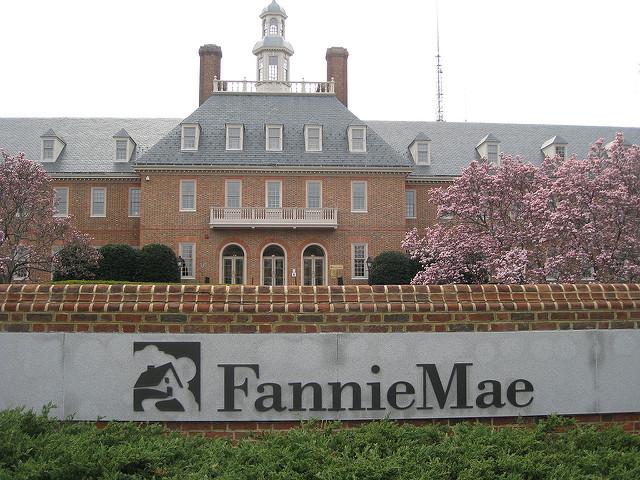- Law & Policy
On April 15, the United States Circuit Court of Appeals for the District of Columbia will hear a high stakes appeal from the hedge funds Perry Capital and Fairholme Capital related to the bailout of Fannie Mae and Freddie Mac. At issue in the case is the legality of an amendment made by the government in August 2012 to the original 2008 bailout. That Third Amendment, as it’s called, has caused a major violation of shareholder rights. (Full disclosure: I have worked as an advisor for a number institutional investors involved in this case and have also written a comprehensive account of all aspects of this complex litigation.)
To recap the history, both Fannie and Freddie—which are government sponsored entities, or GSEs—were under extreme stress in the fall of 2008, and in order to shore up their finances, they entered into a Senior Preferred Stock Purchase Agreement (SPSPA) with the United States Treasury. Under the SPSPA, Treasury agreed to contribute up to a combined $200 billion in cash to both companies in exchange for a senior-preferred stock that carried a 10 percent dividend. Eventually, Treasury lent about $188 billion per year, which carried a hefty $18.8 billion annual dividend payout. Under the SPSPA, both Fannie and Freddie were given the unlimited option to defer payment of the interest, which was then added to principal as an “in-kind” obligation, at a 12 percent interest rate. Unlike many private corporate bailout plans, this deferment did not call for any loss of control by Fannie and Freddie. Treasury thus held a new senior-preferred stock. The old private-preferred shareholders now held junior-preferred stock.
The negotiation over SPSPA took place in a tense financial environment. In the summer of 2008, with crisis in the air, Congress passed the Housing and Economic Recovery Act (HERA), which implemented two new statutory programs.
First, it authorized Treasury on a temporary basis through the end of 2009 to extend temporary assistance the GSEs to help them through this rough financial patch. HERA implicitly assumed that Treasury would be dealing at arm’s length with the directors of a private corporation, which explains why it had a statutory obligation “to protect the taxpayer” as it sought to stabilize financial markets and “to prevent disruptions to the availability of mortgage finance.”
Second, HERA authorized the newly minted Federal Housing Finance Agency (FHFA) to place any impaired corporation into a conservatorship under its control “to preserve and conserve the assets” of the corporation in conservatorship, and to manage its operations until it returned to health, at which point the conservatorship would end, and the business would return to private ownership. The existing shareholders, not the Treasury, are the only persons to whom that duty is owed.
Unfortunately, the drafters of HERA did not anticipate the potent interaction between these two provisions for the GSEs. Both actions took place together, so that one federal agency ended up negotiating with a second. At this point, without the institutional shield that a private board of directors would have supplied to its preferred and common shareholders, the federal government was on both sides of the SPSPA. To make matters worse, the then head of FHFA was Edward Demarco who had previously served as a high-ranking Treasury official. In ordinary corporate settings, having friendly parties on the opposite sides of a deal looks like a slam-dunk breach of the fiduciary duty of undivided loyalty that FHFA owed to the then-existing preferred and common shareholders of the GSE. Indeed, under HERA, the directors of any covered corporation had the right to refuse any deal that Treasury offered to them. With an independent board, Treasury should protect taxpayer interests. Indeed, if both sides do their job, the bailout should be a win/win transaction.
The conflict of interest took a more ominous turn with the adoption of the Third Amendment between FHFA and Treasury nearly four years later. At that time, the market had quieted down, and the GSEs were making timely dividend payments on Treasury’s preferred stock. Nonetheless, FHFA and Treasury ripped up the old agreement, and substituted in its place a new deal that created a “net worth sweep” whereby all of the funds received by the GSEs were paid over to Treasury as a dividend, even in amounts far in excess of the original 10 percent dividend. The consequences have been huge. Without the Third Amendment, virtually all the senior-preferred stock would have been redeemed. With the Third Amendment, about $128 billion that could have been used to redeem the preferred shares has been reclassified as a dividend payment, rather than a return of capital.
FHFA has argued that this one-sided renegotiation really worked for the benefit of the GSEs junior-preferred and common shareholders because it stopped a destructive cycle in which the GSEs would continually have to borrow more money from Treasury in order to make its dividend payments. Not so. That argument rests on an odd factual predicate, given that the GSEs had always made timely dividend payments. It also rests on an equally odd legal premise that ignores the 12 percent in kind option to defer immediate cash dividend payments. The gist of the government’s argument therefore is this: by relieving the GSEs of the obligation to pay dividends when they are broke, Treasury gets all the cash when the companies are solvent.
The bottom line is that the government wins on the upside and loses nothing on the downside. The transaction here is, for all intents and purposes, indistinguishable from a decision by FHFA to transfer title of the junior-preferred and the common to Treasury without consideration. How else can one describe FHFA’s simple declaration, as conservator, that all value associated with the junior-preferred and common shareholders ends up in Treasury’s hands with nothing whatsoever in return. To be sure, this deal is artfully structured so that the junior-preferred and common shareholders retain their legal title to the shares. But that title is stripped of all of its economic significance.
Normally, ownership of shares carries with it voting rights. But once FHFA took over, the shareholders were stripped of their right to remove hostile directors. Normally shares carry with them both dividend and liquidation rights. But here the dividends were paid to the senior-preferred shareholders (i.e. Treasury) to whom FHFA owed no fiduciary duty, and they so rigged the transaction that junior-preferred and common shareholders would get nothing if the government ever decided to liquidate their interest. In effect the transaction leaves the GSEs' ordinary shareholders in limbo. It is just as the lawyers for Perry Capital and Fairholme Capital describe it: a de facto nationalization of private wealth in blatant breach of FHFA’s fiduciary duty, as aided and abetted by Treasury. To make matters worse, this entire transaction took place after 2010, when Treasury’s temporary bailout authority ran out. Redoing this deal from top-to-bottom in a one-sided way is not a simple modification of the original SPSPA that benefits both parties. It is a new deal entered into by the government and for the government.
It was therefore utterly astounding that Judge Royce Lamberth in the District Court granted the government’s motion for summary judgment on September 30, 2014, without allowing any discovery about the underlying facts. The only way in which that outcome was possible was to interpose a variety of dubious procedural defenses that let him duck the obvious conclusion that no fiduciary should ever be able to wipe out the interests of its beneficiaries.
The key to understanding how this took place is to note that litigating against the federal government is always an uphill battle in federal court. Even the most rock-solid case that GSE shareholders bring against the government has at best a 50 percent chance of winning, so heavy is the government’s thumb of the scales of justice. To see why, just ask the question of what would happen if the deal between FHFA and Treasury had been put together by two private parties, one a trustee and another a preferred stock investor, whose conduct was subject to regulation under either the federal securities acts or state corporate law. There is no doubt that this artful transaction would have subjected both parties to serious civil and criminal sanctions because of the deviation from accepted norms of corporate transactions.
But once two branches of the federal government are involved, all sorts of procedural obstacles intercede. Thus in Perry Capital, the FHFA brief first argues that the private shareholders of the GSE do not have standing to bring this case because Section 4617(f) of HERA provides that “no court may take any action to restrain or affect the exercise of powers or functions of the Agency as conservator.” That provision makes perfectly good sense in the common situation where FHFA is entering into deals with third parties over the management and disposition of the assets, given that pesky lawsuits could make it difficult for FHFA to discharge its duties as conservator.
But this provision, as Michael Krimminger of Investors Unite noted in his brief, is lifted verbatim from the Federal Deposit Insurance Act, where it was never construed to block a suit that the beneficiaries under the conservatorship could bring against the conservator. In situations such as this, where FHFA has no intention to protect the private GSE shareholders, then no matter how broad its powers, it necessarily steps outside its role of conservator and should be subject to suit for its alleged derelictions. To let the statute insulate a conservator from suit undermines its specific statutory obligations. By overlooking the grossest breach of duty, FHFA’s reading necessarily deprives these shareholders of the minimum due process protections for their property. It also takes private assets and converts them to government use. Both of these are per se constitutional violations of the Due Process and Takings Clauses. No statute should receive so grotesque an interpretation as the government puts on this one.
FHFA then backs up its initial claim for total judicial immunity by pointing to Section 4617(b)(2)(A)(i) of HERA, which provides that FHFA shall “as conservator or receiver, and by operation of law, immediately succeed to—(i) all rights, title, powers and privileges of the regulated entity, and of any stockholder, officer, or director of such regulated entity”—the entities here being the GSEs. The government reads the 2012 decision in Kellmer v. Raines as containing this simple injunction: “Read the statute; read the statute; (3) read the statute.” But literalism over the word “all” is no substitute for a more systematic statutory analysis, which asks whether this reading guts the fiduciary duties imposed in the same statute.
Kellmer involved a suit brought against Franklin Raines, the former head of Fannie Mae, for his breach of fiduciary duties to the corporation. At this point there is no conflict of interest between the shareholders and FHFA, so that the case only stands for the proposition that FHFA gets to control these suits. But it is a leap to read this statute to insulate FHFA from all charges of breach of fiduciary duty, brought by individual shareholders on behalf of the corporation. As with the previous section, this grotesque outcome converts FHFA from a conservator to an outright owner and is utterly inconsistent with the purpose of the statute. Context matters. Sound statutory interpretation always requires the implication of principled exceptions to bring the operation of the statute in line with its stated objectives.
The D.C. Circuit will soon have the opportunity to redress the grievous errors made by Judge Lamberth and to decide that government conservators, like private conservators, cannot loot the corporations whose shareholders they are sworn to protect.







